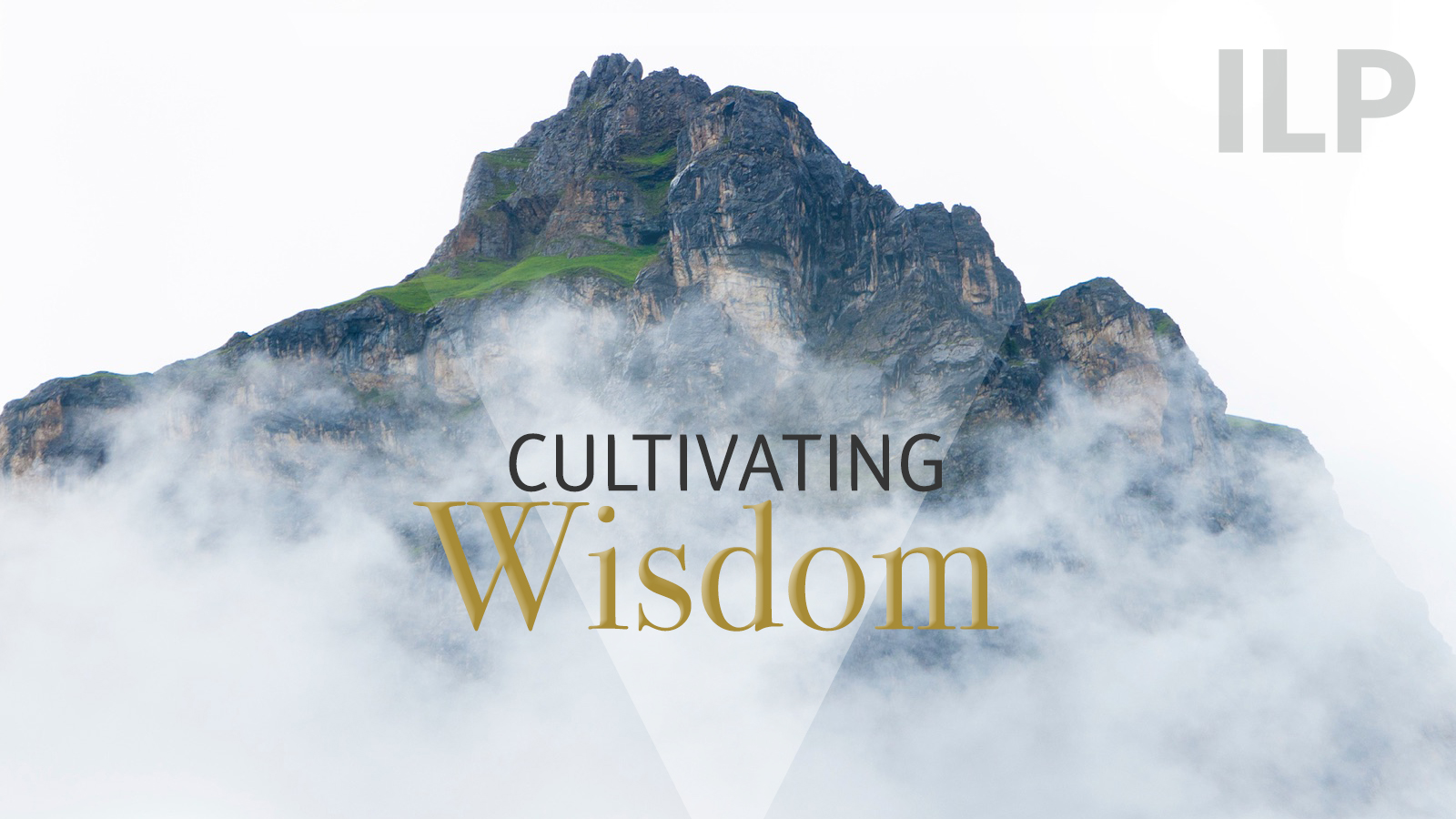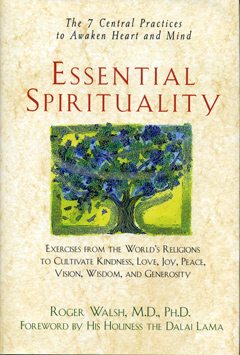Introduction to Karma Yoga
Anyone who is deeply committed to contemplative practice and to cultivating the qualities it enhances—such as empathy, compassion, clarity and insight, to name only a few—will want to practice as continuously as possible. This means finding a way to use our daily activities and work as part of our practice. Fortunately, such a way is part of the world’s major religious-spiritual traditions, and it is formulated most explicitly in Hinduism as karma yoga.
Hinduism recognizes several distinct kinds of spiritual practice or yoga. Each has its own specific focus, and each is appropriate for a particular kind of person and stage of spiritual life. For example, bhakti yoga focuses on love and devotion, raja yoga on mind training, and jnana yoga on discernment and wisdom (Feuerstein, 1996).
However, karma yoga focuses on the activities and duties of daily life and uses them as the elements of one’s spiritual practice. Its goal is to transform all life into practice, or as the Indian philosopher-sage Aurobindo (1922) put it: “turning of this whole act of living into an uninterrupted yoga” (p. 238).
Karma yoga therefore allows an unbroken continuity of practice, and continuity is widely esteemed as one of the great goals and virtues of spiritual life. For example, the Koran (Koran 2:83) urges “Be constant in prayer” (Cleary, 1993, p. 9) while Ramakrishna claimed that “what is necessary is to pray without ceasing” (Hixon, 1992, p. 116). Likewise the Christian St. Isaac, the Syrian, regarded constant prayer as “the summit of all virtues” (Harvey, 1998, p. 63), and the great Confucian sage Menicus urged “always work at self-cultivation” (Ivanhoe, 2000, p. 65). Karma yoga provides a way to “always work at self-cultivation” by using daily activities as our contemplative practice.
The Three Classic Components of Karma Yoga
Classic texts on karma yoga such as the Bhagavad Gita, which was probably composed around 200 BCE, emphasize three main components:
- At the beginning of any activity offer or dedicate the activity to Brahman (God).
- Do your dharma (work) as impeccably as possible.
- Simultaneously release attachment to the outcome. As the Bhagavad Gita puts it (Prabhavananda and
Isherwood, 1972, p. 45):
Perform every action sacramentally, And be free from all attachment to results.
This three-fold practice is profound. It combines a transpersonal motive which undercuts egocentric motives, a commitment to impeccability which requires cutting through personal blocks and barriers, and a relinquishment of egocentric attachment to having things turn out as we want them to rather than the way they actually do.
This last step of relinquishing attachment to outcome can also be seen as the practice of acceptance which is a powerful practice in its own right. For example, the Stoic philosopher Epictitus, who lived from around c.55-135 C.E., urged ―Accept things as they are. That way peace is possible‖ (Epictetus, 1995, p. 15).
Usually, when we work impeccably for a goal we become attached to the outcome. However, combining impeccability and nonattachment makes karma yoga a knife edge practice which cuts away egocentric motives.
Classic texts such as the Bhagavad Gita are profound and inspiring. However, they are also somewhat vague regarding the specifics of karma yoga, and how exactly one approaches daily life so as to most effectively use all activities as elements of one’s contemplative practice.
After years of exploration and experimentation, I have found it helpful to use the following ten steps.
The 10 Steps of Karma Yoga
- Stop before beginning any major activity. Take a moment to stop and breathe. This allows you to become present and to recall your purpose.
- Offer the activity to God or to a Higher Power or Source as you understand this.
- Choose an intention. The intention we choose for an action determines the meaning it has for us and the results it gives us. We can do the same activity, such as our job, primarily for our own benefit, or for the welfare and awakening of all those with whom we interact. While the activity may be the same, the psychological and spiritual impact on us—and probably those around us—will be very different.One can make sense of this in terms of Maslow’s (1971) hierarchy of needs. As a general principle, a higher order motive – such as self-actualization, self-transcendence, or selfless service – brings its specific benefits plus the benefits of lower order goals as well. For example, if you only aim for lower order motives such as survival and physical comfort, that’s probably all you will get. However, if you also aim for self- actualization, then you will need to include the appropriate satisfaction of lower order needs as well.This is not only good psychology but also good theology. As Jesus said, ―seek ye first the kingdom of God, and his righteousness, and all these things shall be added onto you‖ (Mathew 6:33).I find it helpful to inquire at the beginning of major activities, “What is this for?” Or “why am I doing this?” One of the most profound and encompassing answers is the Buddhist Bodhisattva aspiration which seeks to use all activities for the welfare and awakening of all beings, including oneself.
- Do the activity as impeccably as you can. Here the goal is to hold to your intention and to express it as impeccably as you can.
- Be mindful. Bring as much awareness to the activity as you can, observing, for example, your actions, the environment, your motivation and mental state.
- Explore and work with any reactions that arise. These might range from blocks and resistance to pride and joy. It’s especially helpful to be aware of any reactivity to how your activity is turning out, so pay particular attention to emotions which indicate attachment to a specific outcome. These emotions can span a spectrum from delight and pride if things are proceeding as you hoped, to anxiety, anger, disappointment, and hopelessness if they aren’t. All these emotions can be welcomed as feedback signals pointing to an attachment that would be better released (Walsh, 1999; Walsh and Vaughan, 1993).
- Release attachment to the outcome. Whenever you notice emotional reactivity indicating an attachment, that’s a feedback signal to attempt to let it go.
- Stop again at the end of the activity.
- Reflect and learn. Take time to reflect on the activity and your experience and see what you can learn. For example, what
can you learn about doing this activity effectively, about yourself, your mind, and your attachments?
- Offer the benefits. Complete the activity by offering its benefit to all others for their welfare and awakening. It seems paradoxical to try to work impeccably and accrue spiritual benefits, and then attempt to give them away. But this final phase of the practice is based on an understanding of the way the mind works and it is crucial to recognize that what we intend for others, we tend to experience ourselves. For example, if we receive benefits such as a sense of satisfaction and wellbeing from karma yoga and intend to offer those benefits to others, these same qualities are then strengthened in our own minds. This is a beautiful example of the principle that within the mind, to give is to receive.
Awakening Service
“A [person] who finds benevolence attractive cannot be surpassed.”Confucius (Lau, 1979, p. 73)
Classic karma yoga does not explicitly aim at the service of others. However, it can easily be transformed into a practice of awakening service or spiritual service by two simple steps (Three and Ten) in the above list.
Step 3: Choose as your intention to use your activities, not only for your own actualization and awakening, but also as a way to serve and awaken others. This service can take many forms, especially to help, heal, teach, and awaken.
Step 10: At the completion of any activity offer the benefits for the welfare and awakening of all.
When an action is done as both karma yoga and as service it becomes what I call awakening service or spiritual service because it combines spiritual practice and service while aiming at awakening and actualizing both oneself and others (Walsh, 1999).
References
Aurobindo. (1922). Essays on the Gita. Pondicherry, India: Sri Aurobindo Ashram Trust.
Cleary, T. (Trans.). (1993). The essential Koran. San Francisco, CA, Harper San Francisco.
Elgin, D. (2013). Great transition stories for becoming a global eco-civilization. Retrieved from:
www.integralworld.net/elgin1.html.
Epictetus. (1995). The art of living. (S. Lebell, Trans.). San Francisco, Harper San Francisco.
Feuerstein, G. (1996). The Shambhala guide to Yoga. Boston, MA: Shambhala.
Harvey, A. (Ed.). (1998). Teachings of the Christian mystics. Boston: Shambhala.
Hixon, L. (Trans.). (1992). Great swan: Meetings with Ramakrishna. Boston, Shambhala.
Ivanhoe, P. (2000). Confucian moral self-cultivation (2nd ed.). Indianapolis/Cambridge: Hackett.
Lau, D. T. (Trans.). (1979). Confucius: The analects. New York, Penguin Books.
Maslow, A. (1971). The farther reaches of human nature. New York: Viking.
Prabhavananda, S., & Isherwood, C. (Trans.). (1972). The song of God: Bhagavad Gita (3rd ed.). Hollywood, Vedanta Society.
Walsh, R. (1999). Essential spirituality: The seven central practices. New York: Wiley & Sons.
Walsh, R., & Vaughan, F. (1993). The art of transcendence. Journal of Transpersonal Psychology, 25, 1-9.
Wilber, K. (2000). A theory of everything. Boston: Shambhala.






Comments
This is so lovely. Thank you Roger.
One of the best things I’ve listened to in a while.
I have a small consciousness center in Cairo, Egypt, where i teach a small group of seekers.
I will definitely be presenting these 10 points to them in Arabic, and i will duly reference you.
I hope you don’t mind
Best regards
Khaled
I love this. I’m thinking I must have read, heard or seen something about Karma Yoga many years ago and forgotten where the idea came from because this is what I’ve been doing for the past 25(ish) years as a self-employed housekeeper. I’ve always tended to try things as “experiments” that sound “right” to me and just keep doing them when the results are positive. So happy to be (re?) introduced to this basic/simple framework which will help me to share it with my son.
Thanks you Roger for that. Exactly what I needed. Hope to see more of your work on Integrallife 🙂